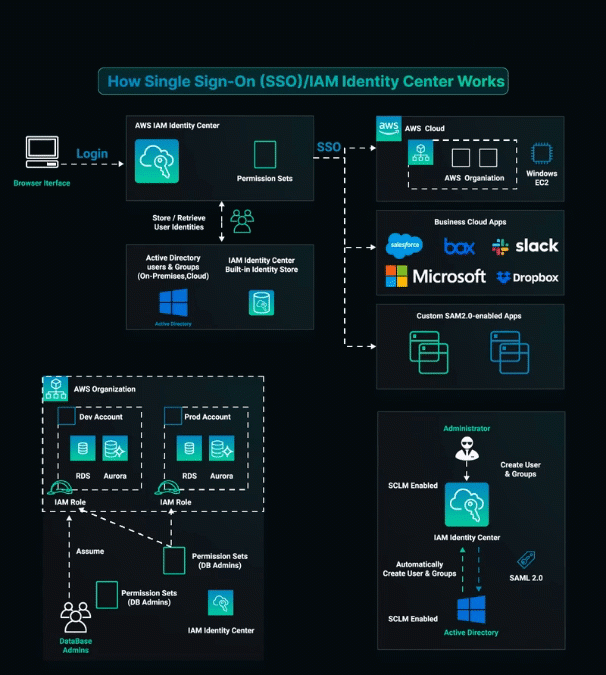Simplifying Access with AWS Single Sign-On (SSO)
AWS Single Sign-On (SSO), now known as AWS IAM Identity Center, offers a streamlined approach to managing access to AWS accounts and business applications. Let’s delve into how AWS SSO works and why it’s essential:
-
Centralized User Management:
-
-
- User Directory: Integrate existing user directories like Microsoft AD or external IdPs such as Okta with AWS IAM Identity Center.
- Single Sign-On (SSO): Users log in once to access all assigned AWS accounts and third-party applications.
-
-
Assignment of Users and Groups:
-
-
- Groups and Users: Admins create and manage groups, syncing them from external directories, and assign users to these groups.
- Permissions: Assign permission sets (IAM roles) to users or groups for accessing AWS accounts and cloud applications.
-
-
Seamless Access to Multiple Accounts:
-
-
- AWS Account Access: Users access multiple AWS accounts from the AWS SSO user portal, configured by admins with specific permission sets.
-
-
Integration with Applications:
-
-
- SAML Applications: Supports SAML 2.0 for integration with various third-party SaaS applications.
- Application Catalog: Add applications to the IAM Identity Center catalog, including custom integrations.
-
-
Customization and Branding:
-
-
- User Portal Customization: Customize the user portal with organizational branding for a cohesive user experience.
-
-
Security and Compliance:
-
- MFA and Audit: Enable Multi-Factor Authentication (MFA) for added security and leverage AWS CloudTrail for audit and compliance purposes.
-
Ease of Use and Deployment:
- Serverless Management: IAM Identity Center is fully managed, eliminating the need for deploying and managing identity infrastructure.
AWS SSO simplifies access management, enhances security, and improves user experience, making it a crucial component for organizations leveraging AWS services and third-party applications.
Keep visiting QuickShare and write to us in the comments below.

